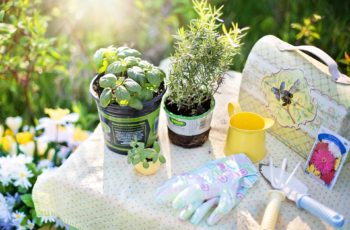Patio Vegetable Gardening for Green Thumbs and Amateur Urban Gardeners
Many people are taking up patio vegetable gardening in recent years as a cost-effective way to healthy eating. Not only does it demand a lot less work than gardening in a yard, patio vegetable gardening is a practical way to brighten up the outdoors of your home.
Container gardens are also a great way to grow vegetables if you live in an urban environment and are short on space. Enjoy the many benefits of a healthy harvest and beautiful home garden with the following guide to patio vegetable gardening.
Choose Your Location
Most edible crops require plenty of sunlight in order to produce a robust harvest. Tomatoes and peppers, for example, need up to eight hours of direct sun exposure each day.
If your patio is shaded and receives less direct sunlight, consider growing root vegetables such as beets or carrots or leafy vegetables like spinach and salad greens.
Another important consideration with a patio garden is water. You will need to water your garden frequently to encourage a prosperous harvest, so make sure your location is convenient to your water source.
Select Your Plants
Several kinds of vegetables are suitable for patio vegetable gardens, depending on the location of your garden and the amount of space available. You’ll also have to consider the scale of your containers when selecting plants.
Many people have successfully grown beans, carrots, chives, cucumbers, garlic, salad greens, onions, peas, peppers, tomatoes, and eggplants in containers.
Some varieties of vegetables are ideal for compact gardens, such as “patio” tomatoes. Others, like Beefsteak tomatoes, can grow up to eight feet in height and spread several feet wide, and may not be the best option for patio vegetable gardening. Most importantly—choose vegetables you love to eat.
Pick Your Containers
Anything that can hold soil and has drainage hole can be used as a pot for your patio vegetable garden. Generally speaking, the larger the container, the more choices you have of vegetables to grow.
It is also easier to take care of a few large containers versus many small ones. Small containers dry out more quickly than large containers, and you will thus have to water them more often.
Because large containers also have larger soil volume, your plants have more space to develop a root system. Plants with lots of roots tend to thrive and yield a larger harvest.
Choose Your Soil
One of the most important elements for a healthy vegetable garden is soil. Traditional garden soil is not the best option for growing vegetables in containers because it doesn’t drain well.
Instead, consider a planting mix designed for container gardens. Container mix retains and releases moisture without clumping or getting heavy.
Regular fertilization also is critical to patio vegetable gardening as frequent watering removes nutrients from the soil rapidly. You may want to avoid fertilizing flowering vegetables with too much nitrogen, however, as it discourages flowering and promotes leafy growth. Kale and spinach, on the other hand, would benefit from nitrogen-rich soil.

